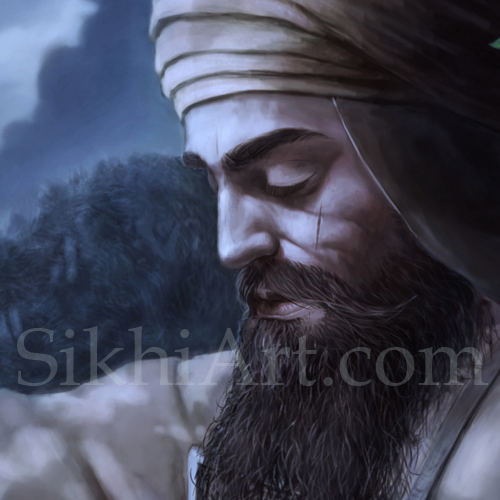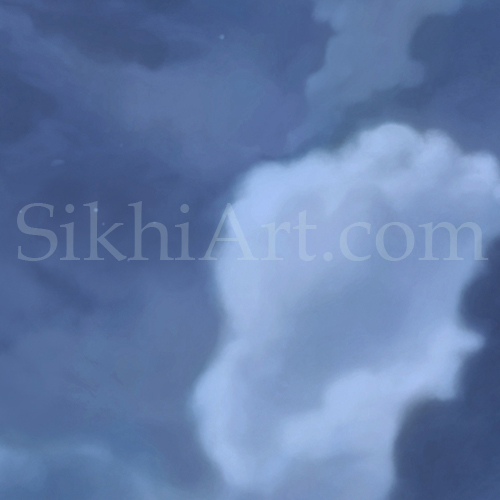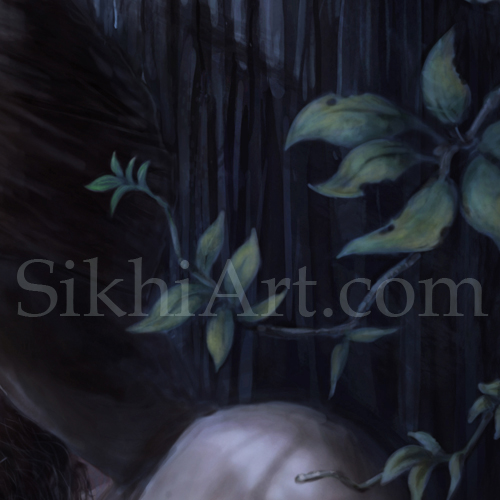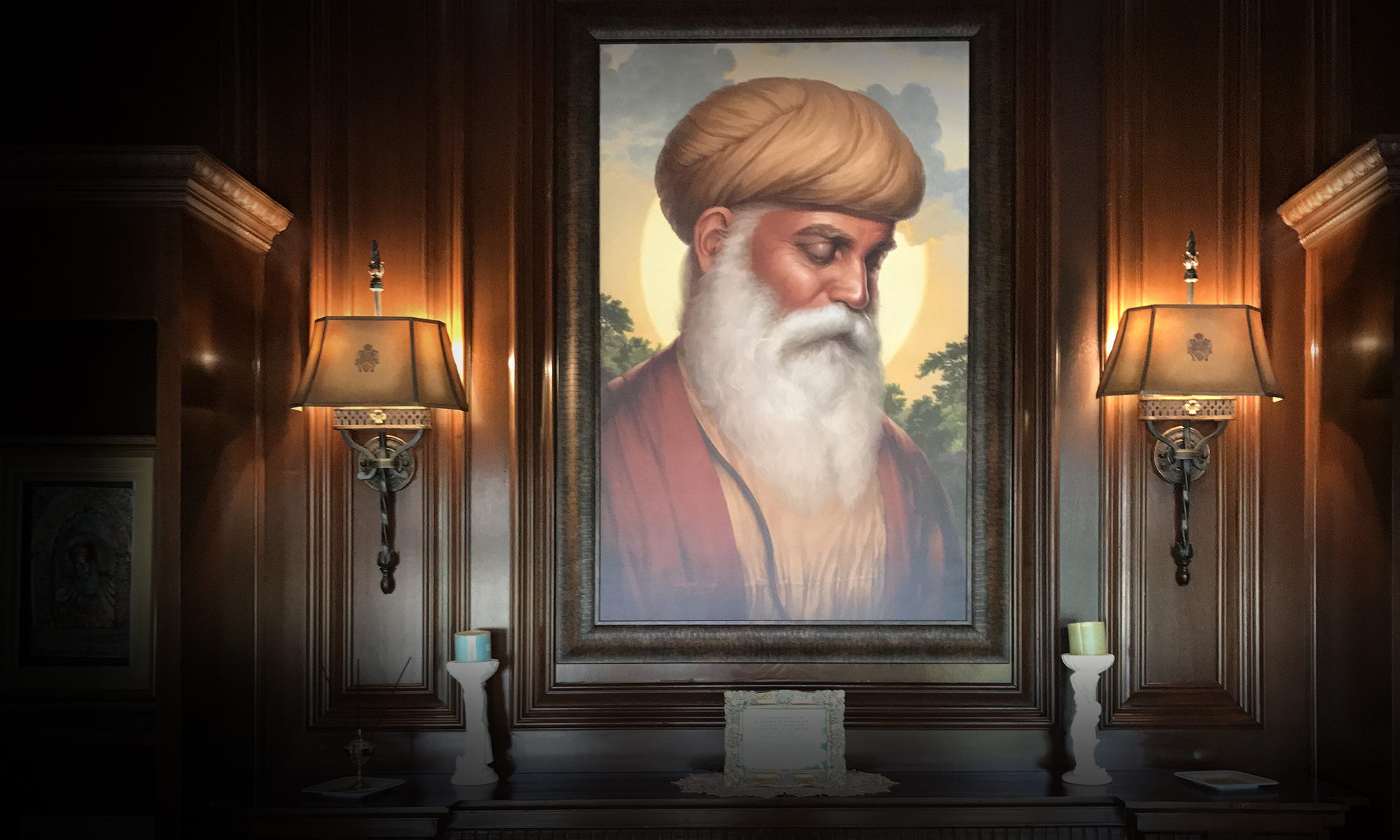“The foolish stubbornness of my mind is gone; God’s will has become sweet to me.”
– Guru Arjun Dev ji (Guru Granth Sahib, 387)

| Premium Gloss Canvas | Cost | Enhanced Matte Paper | Cost |
| Small (16″ x 16″) | $299 | Small (16″ x 16″) | $59 |
| Medium (24″ x 24″) | $399 | Ultrasmooth Fine Art Paper | Cost |
| Large (36″ x 36″) | $599 | Medium (24″ x 24″) | $199 |
| Grand (44″ x 44″) | $899 | Large (36″ x 36″) | $399 |
| Unique (55″ x 55″) | $2499 | – | – |
*Your Premium Canvases are carefully hand-stretched around thick wooden bars to hold them taught. Hanging bits are included so that your canvas is ready to hang as soon as you receive it!
Artist’s Notes
History

After resisting the onslaught of the tyrannical governement, Guru Gobind Singh ji slipped into the forests of Machhiwara. It is said that Guru Sahib was still in the highest of spirits, in chardi kala, even after losing all his loved ones and devotees. He rested in this forest overnight, and while Auranzeb’s army searched for him, he was rescued by his Muslim devotees in the morning. They disguised him as their pir, Sufi master, and lead him away from the hostile environment.
Painting Guru Gobind Singh ji in Machhiwara

After getting lots of encouragement and support from friends and family, I was able to start working on it. I eventually started to see things in my painting that I did not see before. It is said of artists that they “paint from their memory”, rather their attention to their canvas and to the world, their meditation, essentially, develops the painting. This was certainly the case with Machhiwara. I began to see ways to representing things. The shadows the leaves, the muted colours, the withered leaves and the cloudy sky represent the nature of the situation Guru Gobind Singh ji was in.

That was the power of meditation, that Guru Gobind Singh ji had harnessed as an ideal for the warrior-poet, saint-soldier he has always been. Just like Guru Gobind Singh ji, Machhiwara reminds me to be strong when faced with immense impediments. It reminds me to be ready to sacrifice everything I hold close to me for a noble cause greater than myself. Perhaps, more importantly, which gives one the strength to do so, it reminds me to meditate.

